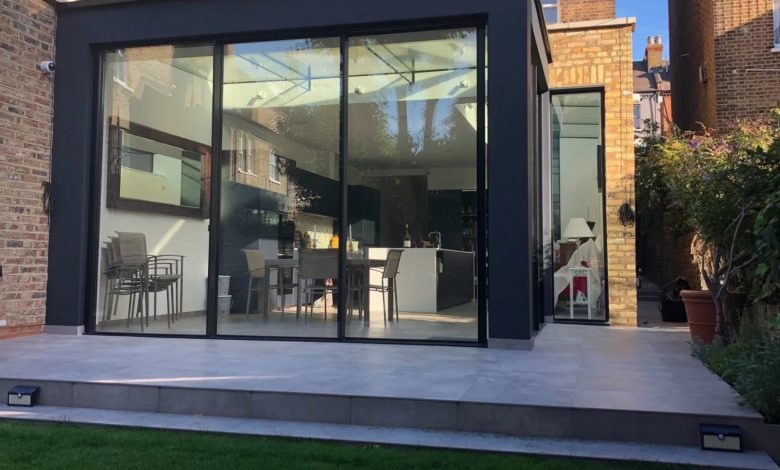Glass Link Extensions for Buildings

Glass connections are a terrific method to integrate the ancient and contemporary in a flawless manner. It is amongst the more sensitive and adaptable materials for combining old and futuristic elements in classy construction; it can highlight historical aspects while developing modern places.
A glass link extension is a beautiful addition to different kinds of property designs, including ultra-modern homes, period homes, and reconstructions. It is always a good idea to link glass. In an aesthetically inconspicuous and pleasing way, glass linkages can contribute to emphasizing or bringing focus to specific components of a historical or classical structure.
A glass attachment is an effective way to solve different design problems. Maybe you’re connecting an independent garage, enclosed patio, or stable to an already existing space. You’re creating an expansion and want to link the old and contemporary due to the new space’s location. A lot of work goes into linking, and it is always a good idea to have all the information you need.
Connecting Two Spaces with Glass Links
You must evaluate how a covered link connection will be constructed in order to have it corrected. The most effective option would be to permit you to hide the supportive frame of the connection, so the screen is the only element visible. This is accomplished by fitting the glass panels into a sturdy metal structure and using strong silicon to hold it in position.
Glass is often supported by quality steel bracing, but if the finances enable it, you might employ glass as a holding component alternatively. It could help to create a flawless, attractive glass container, equipped with sidewalls, ceiling, and structural pieces. You need to confirm the glass and its framework is attached so you can operate them autonomously of each other; so that asymmetrical mobility isn’t a concern. Most of the time, a component like structured silicone will make it possible.
Incorporating laminated glass is always debatable; however, using this kind of glass is best because it will not break into a million tiny pieces that you can’t pick up. It is sometimes recommended to use tough glass, even though this is reinforced and doesn’t break easily when they do; they shatter into tiny bits, which becomes a hazard, especially if you have children.
Keep Ventilation options in mind, and you can use roofs and doors that open to the outside. Also, use standard glass sizes and avoid custom-made components; they cost more. Remember your permissions while constructing; you don’t want to have to take it down after it’s done. Keep cleaning and maintenance in mind as well; what side would I stand to clean the glass, and how regularly do I need to? This and many more are the essential questions to consider when linking glass for two spaces.
Frameless Glass Links
A new expansion to a current structure can be connected with frameless glass linkages. You can build a clear interaction between what is modern and classical by employing glass to establish this link. This is a technique that many planners recommend, particularly on delicate construction installations.
Frameless illusion glass linkages can be built to give cover across two portions of the structure while also increasing the amount of solar light that enters the interior spaces on each side. For flexibility of activity within rooms, accessible components like windows for glass connections can be built within the architecture of your glazed structure.
Glazed links can be installed with an unframed look or with constructed features like as boxed doors, wood bracing, or a concrete ceiling to create an impression of the general concept. Frameless glass columns and glass roofing can be included in the layout for a seamless look.
Mono glazing or shielded glass may be used to make glass linkages. Unless the glass linking area requires insulation, the doubled glass will be needed at a minimal. Because linking glass is an architectural design, tempered glass panels are frequently employed to strengthen the glass’s durability and establish a secure structured glass layout.
Glass Link Buildings and Roofs
Glass roofs are amongst the most flexible and striking glass alternatives, and they may entirely modify the overall look of a building. Nonetheless, referring to these roofs as a unitary phenomenon or thing is incorrect because there are several various varieties, formats, and patterns. Glass roofing allows for a great deal of personalization.
This roofing can be modest or spectacular, and it could be created to adapt to practically any area, with any combination of sliding and immovable functioning. The roofing can be handled physically or electronically and can glide out, turn up, or rotate. It can have nearly any type of glass, such as mono, doubled, or tripled glazing.
So, having all the above advantages in view, how about opting for a glass rooftop? You can go for numerous panels or pick a single panel glazing. This means that they can use a single pane fixed in frames or numerous panes that are connected simultaneously. The obvious aesthetic difference between a roof-enclosed multi-panel item and the simplicity of unframed mono roofs is striking, and deciding which is best will rely on a few factors.
What would be the goal of any installation? This is one of the most crucial questions to ask yourself. Is it simply necessary to allow more light into a room? Is it going to promote air circulation and change the temperature inside? Or will it serve as an entryway or an exit?



